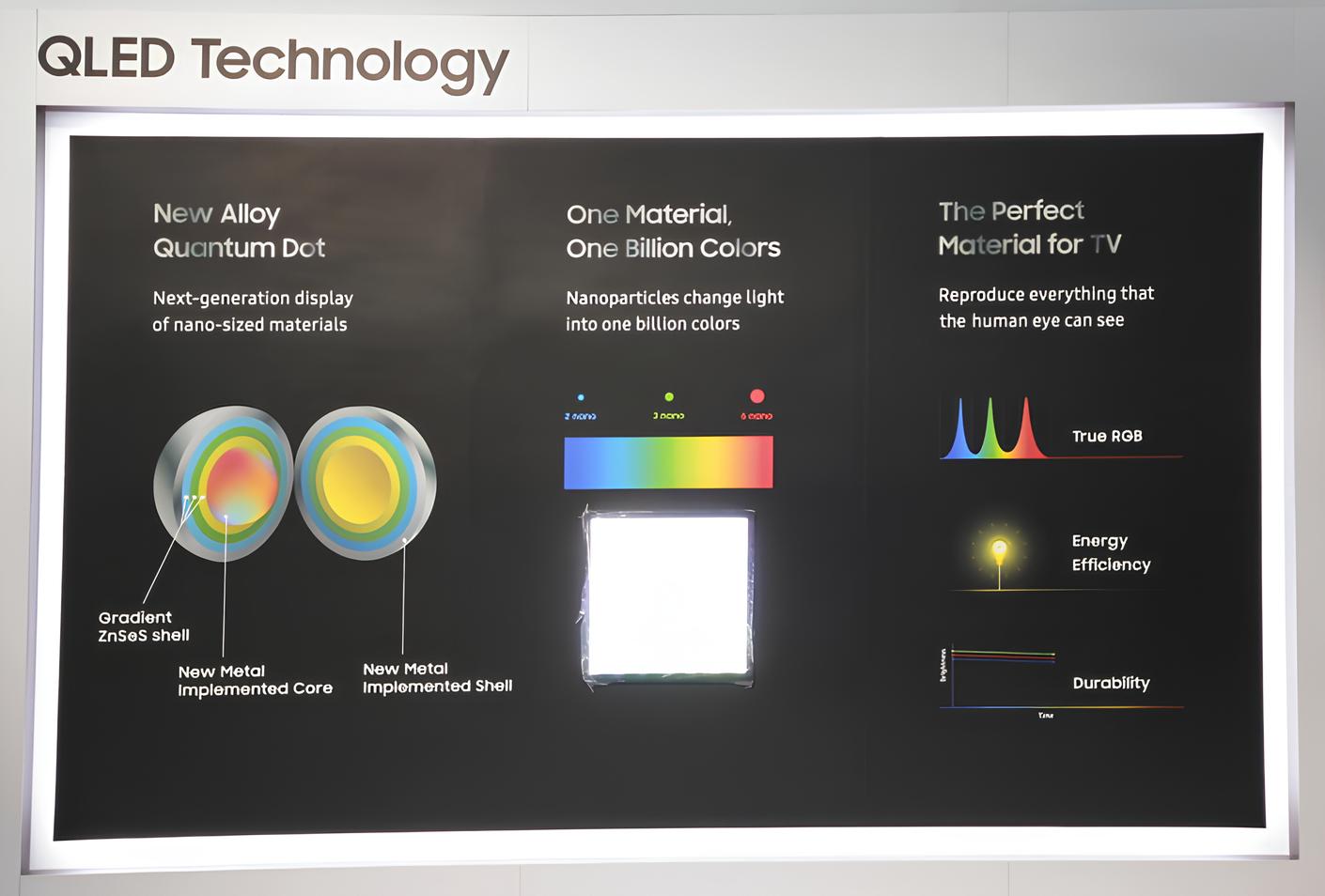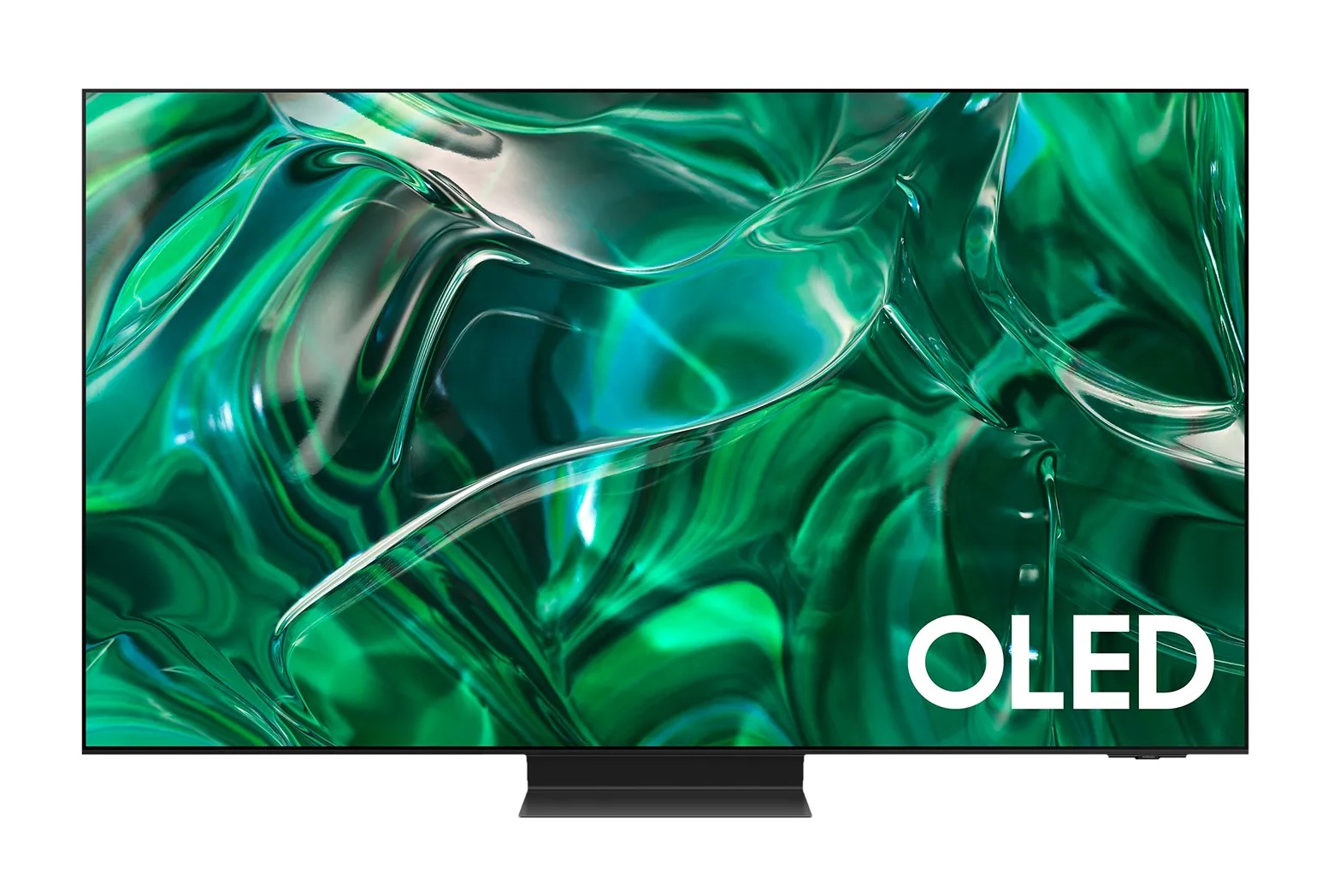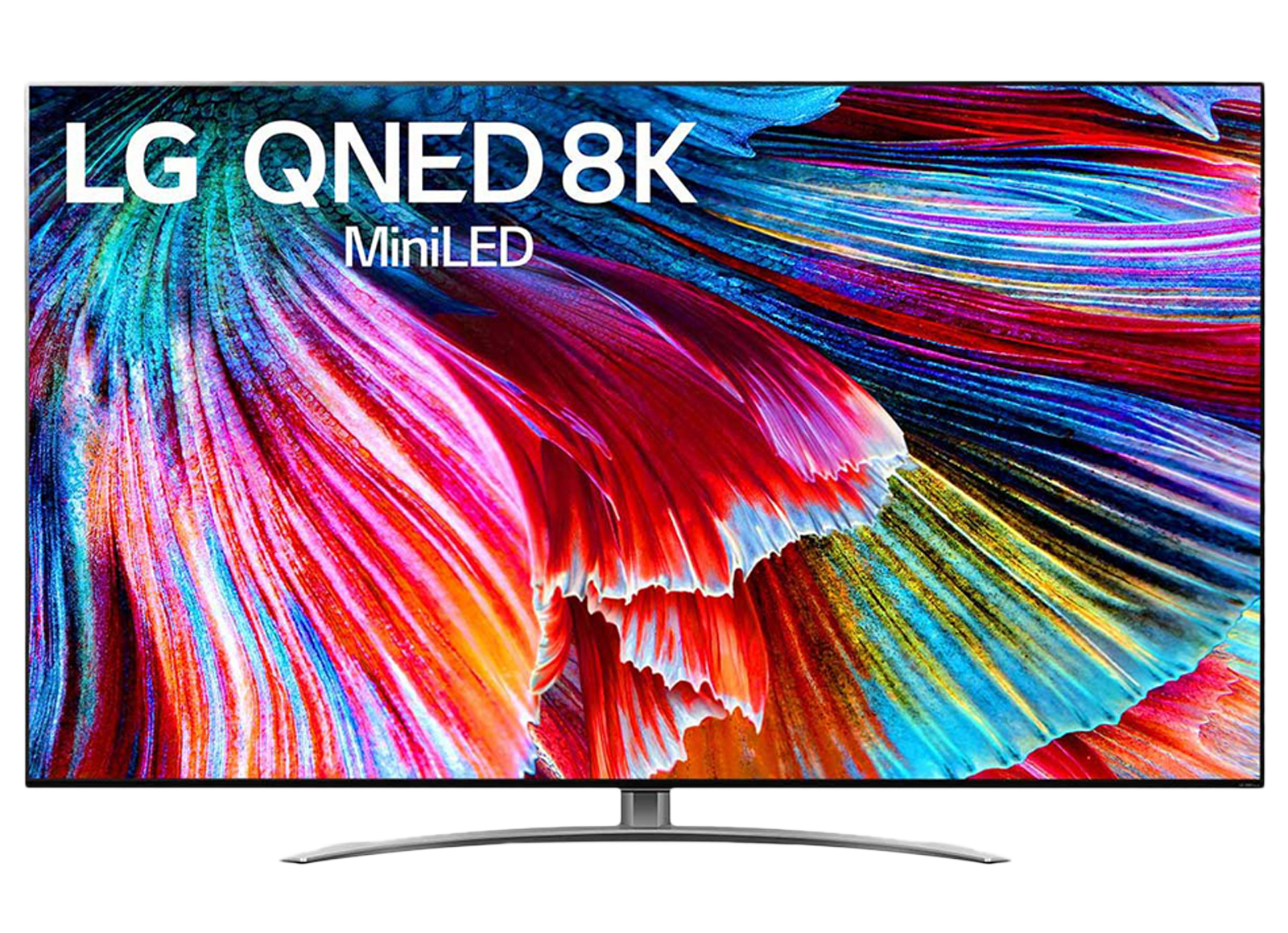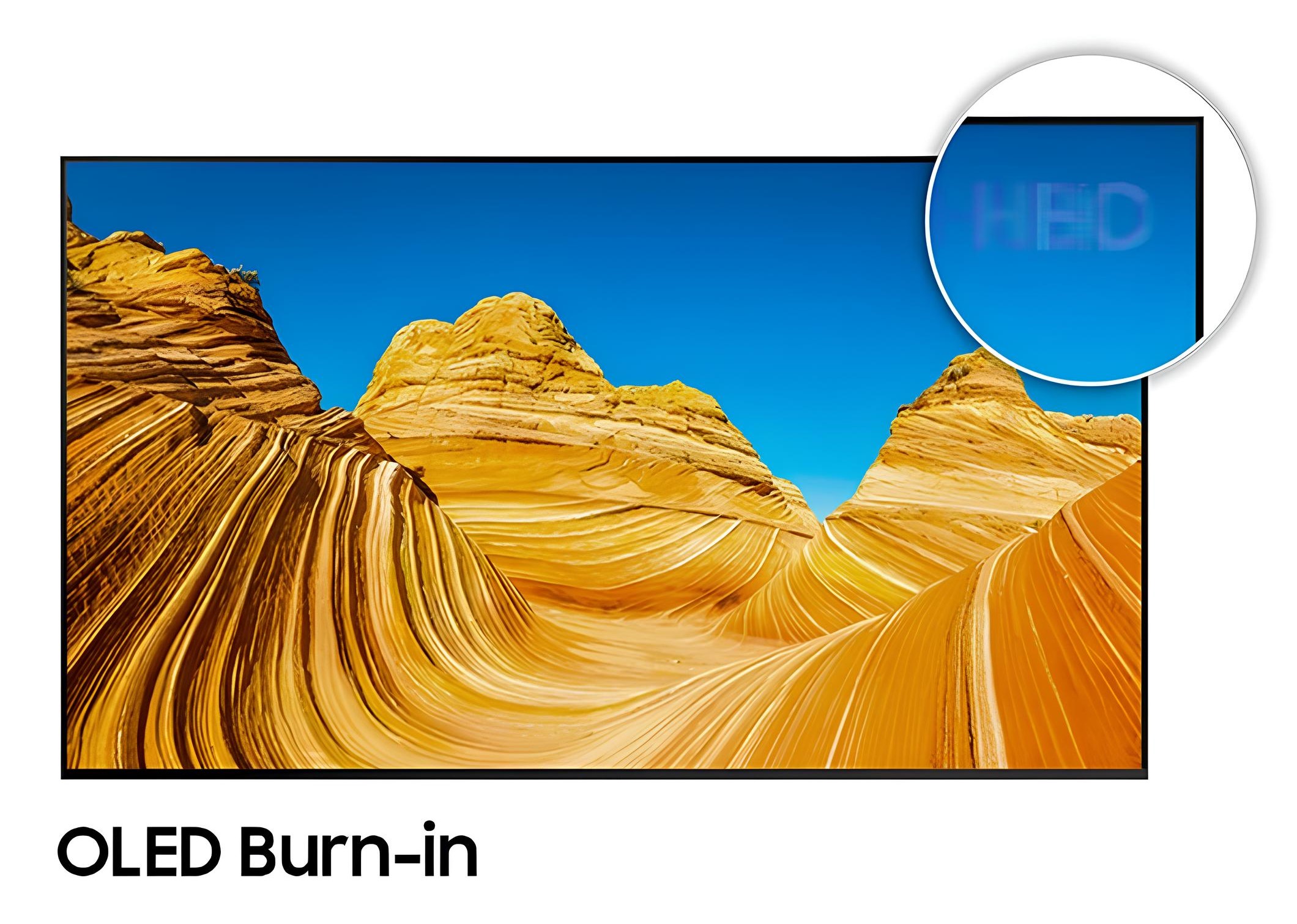
With the emergence of numerous display technologies, it can be a daunting task to pick the most suitable TV for your needs and preferences. Certain displays like QD-LED, OLED, and Mini LED are fairly common with many manufacturers having a vast portfolio of televisions carrying these technologies. In this article, we’ll be taking a deep dive into each of these displays while touching upon their definition, workings, use cases and features, and how they differ from each other.
Table of Contents
What is QD-OLED?
QD-OLED stands for Quantum Dot Light-Emitting Diode which is a display technology primarily used in televisions. It utilises tiny nanocrystals called quantum dots to improve the vibrancy and picture quality of traditional LED displays. QD-LEDs first debuted on Samsung TVs in 2017 and since then many manufacturers have adopted the display technology.
How does QD-OLED technology work?

- QD-LED technology works mostly on the same principle as LED displays but with the addition of a quantum dot layer that enhances the display’s output giving it and edge over the latter in terms of overall visual experience.
- For starters, an LED display has a backlight made of blue LEDs that emits light to a colour filter. When light is projected on the filter, it creates the images on the display which is how a user views the contents of the display.
- In the case of QD-LED, a thin layer of quantum dots is sandwiched between the colour filter and the backlight. When the blue light passes through this layer, more specific colours are produced which leads to more accurate and vibrant colours being displayed on the screen.
What is OLED?

OLED stands for Organic Light-Emitting Diode and this display technology doesn’t require any backlight layer to produce images on the TV’s display. Instead, OLEDs are made with special organic materials that glow when an electric current is passed through them. These organic light emitters together form a pixel that can be individually controlled to be turned on or off.
How does OLED technology work?
- Since OLEDs are made up of tiny light emitters, these are arranged in tiny grids to produce red, green, and blue lights and together work to produce millions of colours.
- Every grid pattern forms a pixel which leads to the creation of millions of such pixels which are controlled by a display component. Accordingly, these pixels work in tandem to produce content on the screen.
- By precisely controlling these millions of pixels, OLED displays can create a dazzling array of colours and achieve incredible black levels as they can be completely shut when a portion of the content doesn’t require colour to be displayed.
What is Mini LED?

As the name suggests, Mini LED display technology functions by making use of mini LEDs. It can be considered as an extended version of LCDs but with advanced features and efficiency. The technology is based on the same framework of backlighting to produce images on the user’s screen but with a twist.
Various renowned consumer technology brands have started implementing Mini LED on a wide range of devices such as tablets, laptops, and TVs. LG’s QNED series features a vast portfolio of TVs with Mini LED technology.
How does Mini LED technology work?
- Just like in the case of QD-LED displays, Mini LED technology has a backlight and an LCD screen which work together to produce images. However, there’s no quantum dots layer involved and instead, the size of the Light-Emitting Diodes (LEDs) is shrunk to fit in more LEDs.
- When more LEDs are added to the panel, it results in higher brightness levels compared to traditional LED TVs and even OLED displays in some cases.
- By achieving higher brightness, manufacturers can deliver a better contrast ratio and even reduce the halo effect on the edges of the display which are visible through certain angles on LCD displays.
How does QD-OLED differ from OLED?
- Colours – QD-OLED displays tend to produce a life-like and wider range of colours while OLED on the other hand boasts punchy and vibrant colours.
- Brightness – With the help of a backlight, QD-LEDs have marginally higher brightness levels compared to OLEDs. So for specific viewing experiences such as watching HDR content, QD-LED has an edge over OLED.
- Contrast – OLED has superior contrast compared to QD-LED. This is simply because each pixel can individually be controlled leading to proper segregation between colours that are being projected on the display.
- Viewing angles – In terms of viewing angles, OLED technology is your best bet as the display’s colours stay intact and do not distort even when viewed from extreme angles. The same can be said for QD-LED.
- Refresh rate – OLED displays are significantly faster when it comes to refresh rates and response time. The reason behind this is that each pixel switches between colours instantly which avoids motion blur or ghosting when looked up close. However, this will only matter if you’re into high FPS gaming.
- Prone to burn-ins – QD-LED displays have a longer lifespan. Unlike OLEDs, these do not contain organic materials that deteriorate over time and are not affected when a static element is displayed on the screen for long periods.

- Power consumption – When it comes to power consumption, OLEDs take the lead here due to the omission of any sort of backlight. Besides that, pixels can be shut when not in use which also adds to the efficiency.
- Affordability – Although QD-LED is relatively a newer technology, devices with OLED displays such as TVs still sell at a premium when taking into account the same display size.
How does Mini LED differ from OLED?
- Colours – OLEDs are well known for delivering eye-pleasing and punchy colours. However, Mini LED displays are no slouch either as they can get quite vibrant too but not up to the levels of OLED.
- Brightness – One of the major advantages of Mini LED is the support for high brightness levels. Thanks to thousands of mini LEDs packed inside the panel, it disperses more light compared to OLEDs.
- Viewing angles – OLED undoubtedly takes the lead here as each pixel emits light in all directions making the display suitable enough to be viewed from multiple angles without distortion.
- Contrast – In terms of contrast, Mini LED generally falls short in comparison to OLED displays as the backlight remains turned on all the time as long as the content is displayed.
- Refresh rate – The light emitters within OLED panels have a fast pixel response time which results in faster refresh rates. So if you’re looking for a TV or a monitor for gaming, an OLED display should be your pick.
- Prone to burn-ins – With Mini LED display panels, you would rarely find screen problems such as burn-ins, retention, or stuck pixels.
- Power consumption – OLED is the more efficient display technology of the two simply because no additional components such as backlight or colour filters are involved to display content.
- Affordability – OLED TVs generally cost more than Mini LED TVs due to the high cost of production despite the latter being a newer technology.
Which display technology TV should you buy – QD-LED, OLED or Mini LED?
To choose the best TV display for your room, consider these basic aspects first and decide accordingly –
- Watching content in a dark room – If you’re someone who binge-watches movies and shows in a dark or dimly lit room, consider picking an OLED or QD-LED TV as these produce well-saturated colours.
- High brightness levels – The external environment also factors in the way you consume content on your TV. For watching TV in well-lit rooms, Mini-LED displays are the way to go as each pixel is capable of emitting high levels of brightness.
- Contrast levels – When it comes to contrast and colour fidelity, OLED outperforms both QD-LED and Mini LED. However, Mini-LED boasts better black and contrast levels compared to traditional LEDs and LCDs which makes it a decent choice after OLED.
- Gaming – OLEDs have the best response rates compared to Mini LEDs and QD-LEDs which prevents ghosting and motion blur during character movement or fast action sequences in a game.
- Less strain on eyes – Due to the absence of a backlight, OLEDs are considered to be safer for eyes for prolonged content viewing as the blue light emitted is on the lower side. However, most display technologies come with display profiles that can help in reducing eye fatigue to some extent.
- Concerned about burn-in – Although all types of technologies carry some sort of burn-in protection, if you still feel there’s a risk then go for Mini LED or QD-LED TVs.
QD-OLED supported TVs
Here are some QD-LED TVs you can currently get in India:
| QD-LED TVs | PRICE |
| Samsung 55-inch QE1C QLED 4K Smart TV | Rs 61,990 |
| Hisense 55-inch 55E7K 4K Ultra HD Smart QLED TV | Rs 34,990 |
| TCL 65-inch 65T6G 4K Ultra HD Smart QLED TV | Rs 54,990 |
Mini LED supported TVs
TVs which come with Mini LED technology are as follows:
| Mini LED TVs | PRICE |
| LG QNED75 55-inch 4K Smart TV | Rs 84,631 |
| iFFALCON by TCL H82 55-inch QLED 4K Smart Android TV | Rs 78,803 |
| TCL 65C755 65-inch QD-Mini LED Google TV | Rs 99,999 |




















